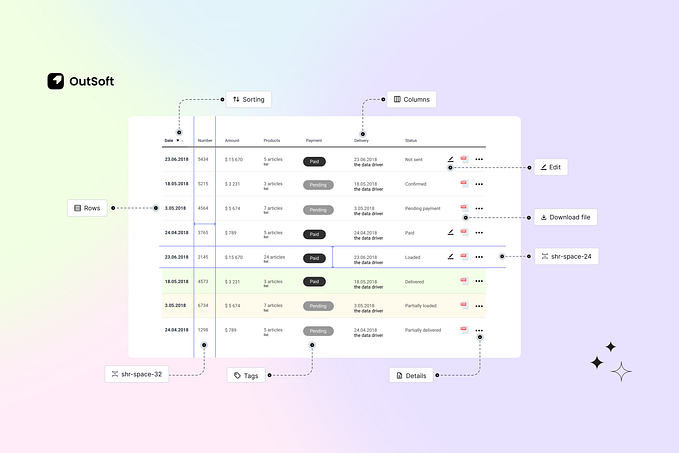Growth Design: the fusion of business and user experience
Learnings from being a part of a growth design study group.

I just finished being part of a study group on growth design with Lex Roman and the growth designers community. In this article, I wanted to share some of my takeaways and what are some key differences between Growth Design and Product Design.
Before joining this study group, I was reading about Growth Design in an article and thought this is kind of what I already do. I design to make sure we are solving a problem. I experiment and research to identify the best way to solve the problem. I design to make an impact. I try to measure the impact of my work. Does this all sound familiar? This is what growth design entails.
Growth Design is a very new field and a ballpark would be around 5 years old.
What is growth design?
Growth design is the idea of helping a business grow while providing a great experience to the customers. It is a much tighter integration between business and UX, than what we have come to learn in traditional product design methodologies.
It is based on the idea of the growth mindset where you try to stretch your existing abilities and may even fail in the process but you learn a lot from the process. As a growth designer, you have to think in experiments, not ready to roll something out until there is substantial evidence that it will be successful (moves a business metric).
It leads to a very outcome-focused approach (increase checkouts by x%) vs an output focused one (shipping z number of designs).
Many times designers have a really hard time proving their value to the stakeholders. As soon as the company decides to downsize, designers are considered a non-essential component (although it is changing). However, if you can show the executives how your design is directly impacting or bringing business revenue, you have got yourself a solid case. This is what Growth Design is centered on.
Different stages of growth design:
Setting a goal
- Why do we need to set so many goals in life? Plan for your day, week, month, year, decade, life? When will it all stop?
- Even though you might feel this way, and if you do, you are with me, but in Growth Design setting a goal that is clear, actionable, and measurable is extremely important. It helps to make sure that your team doesn’t go, rogue, when trying to think of impact work. They keep the teams aligned on what they are trying to accomplish like trying to hit those specific business goals.
- Setting a goal along with ruthless prioritization (I love this term) to avoid low impact work, forms the foundation of growth design.
- Design metrics are business metrics. It was an important idea which I still can’t get my head around but I thought it was interesting. Lex mentioned that if something is important and it drives the business forward, it’s a business metric. If it doesn’t drive the business, then it can’t be used to measure growth.
Investigation
- In this stage, you are trying to look for opportunities in the product where poor customer experience is affecting the business in a negative way.
- You can do this by talking to your customers to understand their needs and goals, digging deep into the analytics (behavioral), or through competitive analysis.
- The Competitive Analysis here is a little different from what designers usually do. It’s more about evaluating what value customers are getting by using a competitor’s product and less about just looking at interfaces.
The idea of experimentation at scale

- Keep an open mind and be willing to try new things. It is the idea of taking calculated risks regularly that acts as a tiny step in the right direction.
- Although I am not a big fan of Mark Zuckerberg, this quote from him has deeply affected some of the decisions in my life:
“The biggest risk is not taking any risk… In a world that is changing really quickly, the only strategy that is guaranteed to fail is not taking risks.” — Mark Zuckerberg
- Growth design is deeply rooted in the idea of shipping to learn. You continuously design experiments, test them, and learn from them.
- By experimentation, it doesn’t mean just A/B tests. There are a plethora of other tests that you could do to learn what works and what doesn’t.
Measuring to know if you are making progress
Data…Data…Data…So much Data!
- I used to think of going through analytics data as a way to identify whether I have been able to solve the UX problem at hand and how many people use the feature.
- But honestly, it is much more than that. It is a way for you to learn which product design principles work for your product and which ones don’t. Because growth requires experimentation on small things and that too regularly, you will learn a lot about which UI patterns are better than others. Rather than just reading about them on the Nielsen Norman's website. Read this article on how to set metrics for design where the author makes a case on why Failure is empowering.

- I have tried talking about Product analytics tools at my places of work, and when the management doesn’t understand the difference between product/behavioral analytics tools and business intelligence tools, the answer you get is, there is a different team looking at metrics and they can give you the data if you want. This is primarily the reason why product analytics tools exist. They are much more user friendly and you can create graphs and look through the data easily to make decisions.
The moral responsibility
- When designing for growth, it becomes very important to consider the impact of your designs on users. I am thinking about the Netflix documentary — Social dilemma here.
Try to keep your eyes and mind open while designing and be prepared to ask why and say no.
- Mike Monteiro writes a lot about ethics in design, and in his articles, he has shown what kind of responsibility a designer has and what could be the repercussions, if the job is not done well enough. Read about the examples he gave from the Greyball software at Uber to a software leading to the death of Bobbi Duncan.
- Read this article about Chamath Palihapitiya on how he regrets helping create the social media giant — Facebook.
This was just a primer of what all growth design entails and where do I see it fitting into my role as a product designer. There are a lot of other things to keep in mind while implementing the practice of growth design like setting up data sources, or relationship building because growth teams will be stepping on many areas of the product, etc.
Personal growth
A lot of the growth design principles I talked about can be directly applied to your personal growth as well.

Setting clear goals and ruthless prioritization (can’t help it but this term is great) can really help with making sure you are working on the right things. The idea of experimentation or calculated risks means that you are pushing yourself a little farther every time. Whatever gets measured, gets improved. So if you are not measuring something and relying on how it feels, you may be lying to yourself.
To conclude, Growth Design is an interesting and growing field where you get to see the impact of the work that you are doing in real-time. And as more and more companies realize its value, it’s only going to grow (hopefully in an ethical manner).
Thanks for reading.








